Continuing our NEC Shootout between the 43 foot vertical available from DX Engineering or Zero Five and the adjustable height BigIR antenna available from SteppIR antennas we now analyze them in the 20 meter band.
The BigIR offers an interesting advantage between 1/4 and 3/4 wave length modes for the 10, 12 and 15 meter bands. At about 32 feet height maximum, this benefit ceases to be useful for 17 meters and longer. Thus, this post compares just two antennas: the 43 foot and the BigIR set to approx. 16.7 feet height.
As always, each EZNEC simulation is based on a model from the excellent collection of NEC files available from the late Cebik.
Here are the two antennas with the current magnitudes at 14.1 MHz.
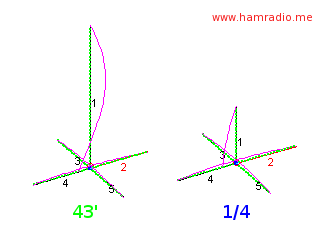
As usual, the 1/4 wave antenna’s currents are nil at the top and maximum at the bottom. Assuming you have a good radial system on the ground with low ground resistance this should be near the ideal of 36 ohms impedance. This results in a SWR of about 1.4 or so. This is good demonstration where the ideal SWR of 1:1, where the feed point impedance is 50 ohms and a good match for the coax, is not the ideal since this means you have 36 ohms antenna reactance (turns your RF into signal) + 14 ohms ground resistance (turns your RF into heat). That’s another story though.
Here is the plot…
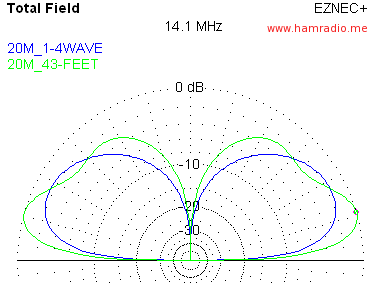
Well well, the 43 foot has some clear benefit here. It potentially has a lower take off angle and a bit more gain than the 1/4 wave. It is not staggeringly better, but if you are trying to get every dB you can, the 43 foot wins. Points include:
- The 43 foot vertical has its peak lobe at a nice low angle of 16 degrees with a gain of about 1.3 dBi
- The 43 foot has a full half-wave radiating section well above the radiating portion of the 1/4 wave which may help your signal clear local obstacles
- The 1/4 wave BigIR has its peak lobe at 27 degrees with -0.3 dBi.
- The SWR for the BigIR is around 1.5… perfect
- The SWR for the 43 foot was far more than 10:1 with a 50 ohm coax feed. If you have a 1:4 balun the SWR gets tamed down to around 7:1. Obviously a matcher is needed and contributes its own losses
Who wins? Well I don’t know. Analysis is showing clear benefits, but nothing that would move the S-Meter more than a couple of S-Units.
The fact the BigIR is tuned by adjusting its height makes it possible to reach the theoretical 36 ohms. This puts significant requirements on your radial system if you are to have good antenna efficiency.
The very fact the 43 foot antenna is being fed at a higher impedance point suggests the radial system’s impedance need not be as low to maintain good efficiency. Then, however, there is the need for the tuner somewhere with potential added losses.
I am using the equivalent of the BigIR with my 16.6 foot copper pipe monopole antenna in my backyard over 28 radials each 33 feet in length. It works on 20 meters, but I am not busting pileups with 100 watts. Would the 43 foot approach give me an edge with everything else being the same?
Stay tuned for more band analysis.
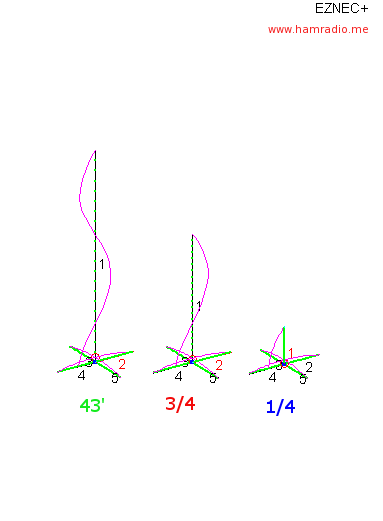
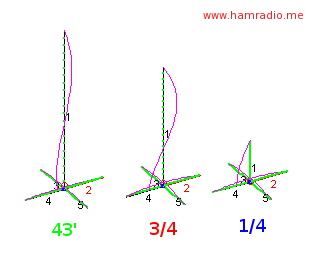
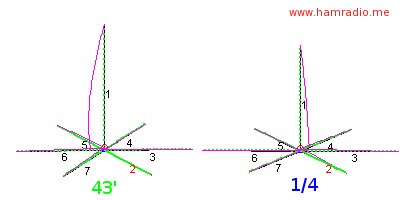

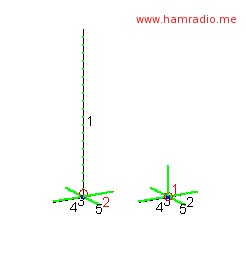
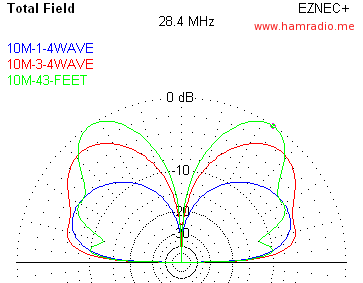
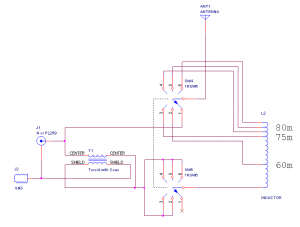
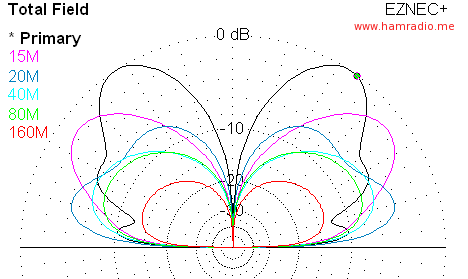
Great post.. Since the 43 foot vertical is just about a 5/8 wave for 20 meters, I've been thinking about using one as a monobander for 20 meters by building an inductive coil for the base, tuned to 20 meters. This should give me close to 50 ohm match with trial and error.
I wanted also to use the 43 ft as a 20m 5/8 loaded with coil at bottom. Do you have any specs on the coil for 5/8 wave and where you fed it.
I have been using verticals for around 50 years now. I have had great success with two 43 foot ground mounted verticals spaced 16 feet apart with a phasing line between them. Using two MFJ tuners, I can load 'em up on 11-bands (6m thru 160m). Layne AE1N
Is it possible to get more information on your phased 43"s. i have a salt marsh but have been unable to harness the advantage to date.
Perhaps you can reference me to an article? Any assistance is greatly appreciated.
thank you,
ken kb1z